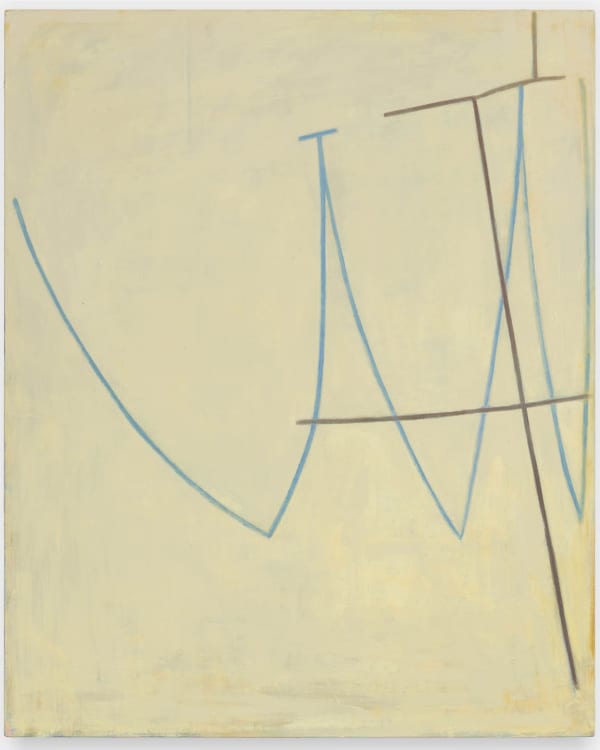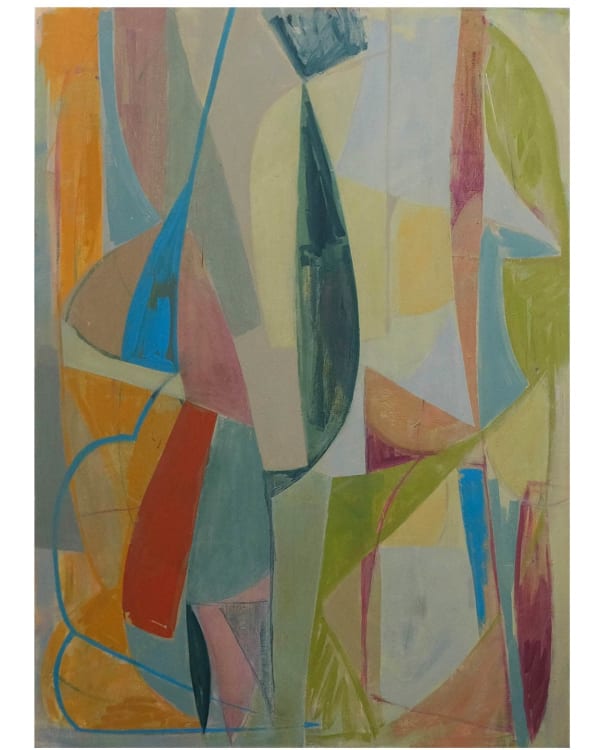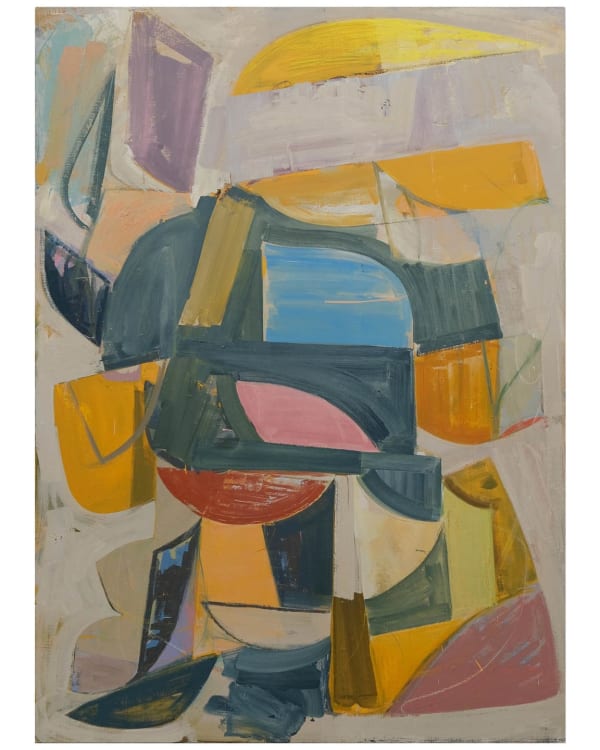NO.10 JOSEPH GOODY: UP OUR STREET - 8 Holland Street’s neighbours, near and far
Abstract painter Joseph Goody’s studio in south London is a place where his interest in music and art merges with a deep underlying interest in structure, geometry and subtle meaning. We pop in to see how they all lace together in his colourful, powerful paintings.
Pinned up to the wall in the artist Joseph Goody’s south London studio is a series of postcards. They include a 15th century battle scene by Paolo Uccello, a still life by wartime painter Paul Nash and a haunting portrait of a nude by Edvard Munch. Not one abstract?, I ask the largely non-figurative painter. He laughs and says, “there’s always something about the hyper-organised alignment of things in painting that I find interesting. When you have structure, you have expectation. It speaks for itself.”
Structure has been the thread that runs through all of his works, whether large scale painting or small, soft watercolours. Goody cut his teeth studying fine art at the highly conceptual Goldsmiths before doing a course at the Royal Drawing School, which he describes as a complete U-turn. The mix of the avant-garde and the traditional remains apparent in his works today and are all united in his interest in form.
Are his pieces totally abstract? “They are in spirit but there is often something figurative that happens, although only ever very minimal. I’ve been reading a lot of Kafka so castles and turrets and parapets just happened in one picture,” he says. Rilke is another influence. “He writes about something specific like the throwing of a ball or the swinging of a rope but it opens up into something entirely different," Joseph says, making clear this influence on his own work. “Abstraction is supposedly about ambiguity – that things can mean anything – but I like the challenge of whittling meaning down into specificity, however arbitrary or simple it may be.”
Joseph comes into the studio three or so days a week, starts early with a coffee and reading before painting. Works will be tended to over the course of months, with paintings put away after a time, a watercolour tended to and vice versa, before returning to other works sometimes months later. “I like to let myself forget about things. It helps keep things moving.”
I notice a guitar in the corner. Does that help the process too? “It’s positive procrastination I guess,” he says, explaining how he often writes songs in the studio too. “I find coming up with a melody and a counter-melody so interesting; that you can play with feelings of expectation. That’s the same as painting to me,” he concludes.
My ideal neighbours would be...
The Aston Villa squad. Yes, all of them.
The house I’d like to live in is...
Somewhere near the coast, with a sea view.
Tomorrow I will...
Head back to the Midlands to visit my family and play with my nephew Arlo, haven’t been able to see much of them over the past couple of years!
WRITTEN BY 8 HOLLAND STREET CONTRIBUTING EDITOR TOM MORRIS
PHOTOGRAPHY BY OLLIE TOMLINSON
-

Artist Joseph Goody inside his south London studio.
-

One of his largest oil paintings to date, this work was influenced by Kafka.
-

Joseph will often work on many works at any given time, putting them away and returning sometimes a month or so later.
-

Inspirational postcards hanging on the wall of his studio.
-

Tubs of oil and tubes of paint awaiting use.
-

The Royal Drawing School-trained painter flipping through a sketchbook.
-

Goody also plays guitar and says the process of songwriting is similar to his approach to composing his paintings.
-
 Joseph Goody, Liminal
Joseph Goody, Liminal -
 Joseph Goody, Umbra
Joseph Goody, Umbra -
 Joseph Goody, Heart's Swing
Joseph Goody, Heart's Swing -
 Joseph GoodyLocus2022
Joseph GoodyLocus2022
Oil on canvas
H160 x W130 cm£ 5,100.00 -
 Joseph GoodyPrimary2025
Joseph GoodyPrimary2025
Oil on canvas
H130.5 x 105.5 cm£ 4,200.00 -
 Joseph Goody, Bookmark
Joseph Goody, Bookmark -
 Joseph GoodyDrawing IIOil on canvas
Joseph GoodyDrawing IIOil on canvas
H51 x W41 cm£ 1,500.00 -
 Joseph GoodyDrawing IIIOil on canvas
Joseph GoodyDrawing IIIOil on canvas
H51 x W41 cm£ 1,500.00 -
 Joseph GoodyDrawing IVOil on canvas
Joseph GoodyDrawing IVOil on canvas
H51 x W41 cm£ 1,500.00 -
 Joseph GoodyDrawing IXOil on canvas
Joseph GoodyDrawing IXOil on canvas
H30.5 x W35.5 cm£ 1,100.00 -
 Joseph Goody, Drawing VIII
Joseph Goody, Drawing VIII -
 Joseph Goody, Drawing X
Joseph Goody, Drawing X -
 Joseph Goody, Body Wholly Body
Joseph Goody, Body Wholly Body -
 Joseph Goody, Illumine
Joseph Goody, Illumine -
 Joseph Goody, The Highest Wall
Joseph Goody, The Highest Wall -
 Joseph Goody, Smoke Signals
Joseph Goody, Smoke Signals -
 Joseph Goody, Two Truths
Joseph Goody, Two Truths -
 Joseph Goody, Reflection
Joseph Goody, Reflection -
 Joseph Goody, Anchorless
Joseph Goody, Anchorless


























